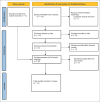Tranexamic Acid in Body Contouring Surgery: A Systematic Review and Meta-Analysis
- PMID: 40509914
- PMCID: PMC12550359
- DOI: 10.1093/asj/sjaf112
Tranexamic Acid in Body Contouring Surgery: A Systematic Review and Meta-Analysis
Abstract
Breast and body contouring procedures are plastic surgery's most popular and effective interventions. Although these procedures are generally safe, they are not without risks and complications. Antifibrinolytic drugs such as tranexamic acid (TXA) have been used as an adjunct to improve outcomes. The authors of this meta-analysis explore the impact of TXA on complications in breast and body contouring procedures. They searched PubMed (US National Library of Medicine, Bethesda, MD) for studies that used TXA in standard breast reconstruction and body contouring procedures. They then performed a meta-analysis on the following complications: hematoma, seroma, infection, and wound-healing complications. A Mantel-Haenszel method random-effects model was used to calculate the odds ratio (OR) within and a 95% CI for dichotomous outcomes. Subgroups were created for studies that utilized systemic (IV), topical or concurrent IV, and topical TXA administration. A total of 13 studies were selected and included in the analysis. There was a significant lower risk of hematoma (OR = 0.37; 95% CI = 0.18-077; P = .008) in the TXA cohort. There were no significant differences observed in terms of wound-healing issues or seroma formation. The subgroup analysis of this study demonstrated significantly decreased risks of infection (OR = 0.41; 95% CI = 0.22-077; P = .005) in the topical TXA cohort. In breast and body contouring procedures, the risk of hematoma and wound-healing complications can potentially be reduced by IV TXA administration. The infection risk can be potentially reduced by topical TXA administration. Level of Evidence: 3 (Therapeutic).
© The Author(s) 2025. Published by Oxford University Press on behalf of The Aesthetic Society.
Figures






References
Publication types
MeSH terms
Substances
LinkOut - more resources
Full Text Sources
Medical

